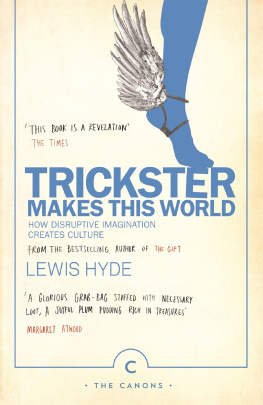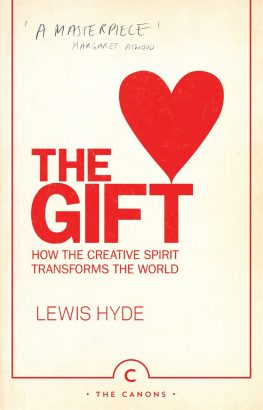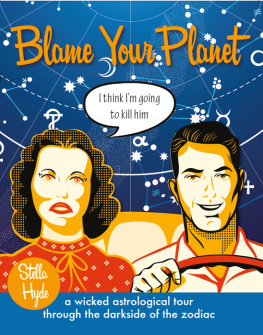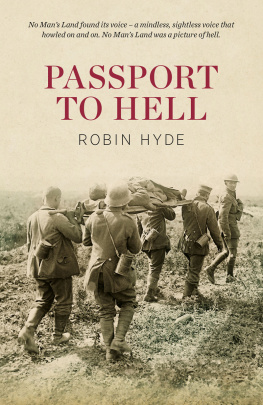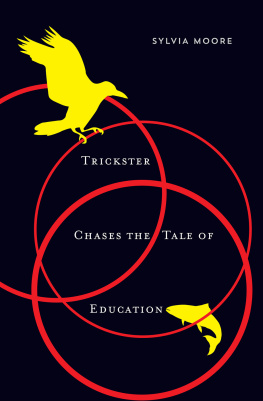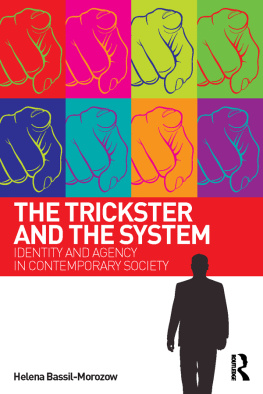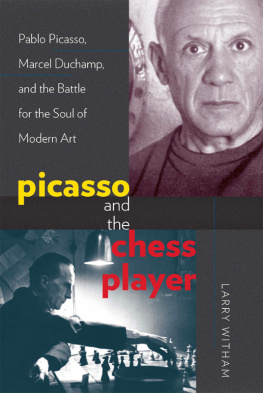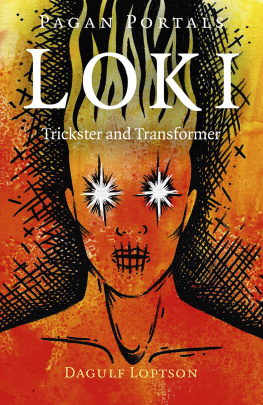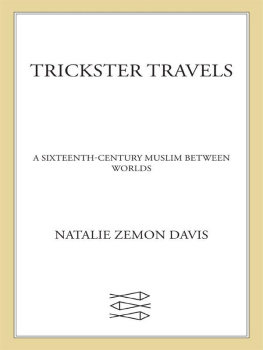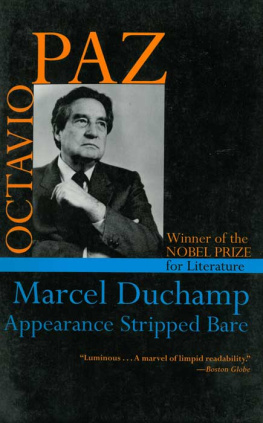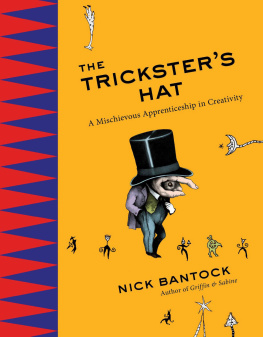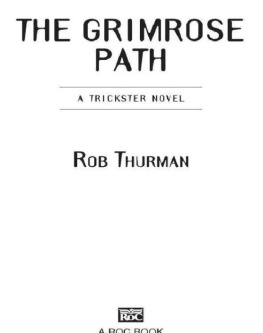The Canons are books without boundaries.
Some are classics already; the rest will be soon.
Reminds us of our cultural gifts and our responsibilities to them... A manifesto of sorts Zadie Smith
Hermes running with the lyre. From a red-figure kylix by Makron, c. 500475 B.C.
Coyote and Bird petroglyph from Painted DesertPetrified Forest National Park, Arizona. Late Anasazi, c. A.D . 11001300. Detail of photograph by Linda Connor.
Divination tray with Eshus face at the top and a set of the sixteen palm nuts used in divination.
Tlingit Raven Helmet from Sitka, Alaska. In his beak, Raven holds the box of sunlight that he stole from heaven.
The baby Hermes in his cradle with his mother, Maia, and the cattle of Apollo. Hermes, only a day old, is wearing the petasos, the travelers hat. Exterior of a red-figure kylix by the Brygos painter, c. 480 B.C.
Danish forge stone showing Loki with his lips sewn shut.
The baby Krishna, tied to a mortar by his mother and the gopis, after having broken into the hanging butter pots in the background. Miniature by Kangra, c. 1790.
Bronze head of a caduceus (Hermes staff). Early fifth century B.C.
Baubo, the nurse in the Eleusinian Mysteries. Fifth-century B.C. terracotta figurine from the city of Priene in Asia Minor.
Monkey, from an early-nineteenth-century Japanese edition of The Journey to the West.
TRICKSTER MAKES THIS WORLD
Every generation occupies itself with interpreting Trickster anew.
Paul Radin
We interpret always as transients.
Frank Kermode
O nce during the winter after I got out of college I was hitchhiking north of Winslow, Arizona. Just after sundown three Navajo men in an old green Chevy picked me up. The driver I remember distinctly as his hair was as long as mine, and he had lost the top of his right ear. He and his friends had been working a construction site near the New Mexico border and were headed home to Tuba City for the weekend. Two or three times in the fading light we came upon coyotes crossing the road or slinking along in the nearby brush, and there began a somewhat reverent and somewhat joking discussion of coyotes and their ability to see in the dark, which led in turn to my hearing what I only later understood to be a very old story.
Long ago, the driver said, Coyote was going along and as he came over the brow of a hill he saw a man taking his eyes out of his head and throwing them up into a cottonwood tree. There they would hang until he cried out, Eyes come back! Then his eyes would return to his head. Coyote wanted very much to learn this trick and begged and begged until the man taught it to him. But be careful. Coyote, the man said. Dont do this more than four times in one day. Of course not. Why would I do that? said Coyote. (The others in the car laughed at this, but not the driver.)
When the man left, Coyote took his eyes out and threw them into the cottonwood tree. He could see for miles then, see over the low hills, see where the stream went, see the shape of things. When he had done this four times, he thought, That mans rule is made for his country. I dont think it applies here. This is my country. For a fifth time he threw his eyes into the tree and for a fifth time he cried Eyes come back! But they didnt come back. Poor Coyote stumbled about the grove, bumping into trees and crying. He couldnt think what to do, and lay down to sleep. Before too long, some mice came by and, thinking Coyote was dead, began to clip his hair to make a nest. Feeling the mice at work, Coyote let his mouth hang open until he caught one by the tail.
Look up in that tree, Brother Mouse, said Coyote, talking from the side of his mouth. Do you see my eyes up there? Yes, said the mouse. They are all swollen from the sun. Theyre oozing a little. Flies have gathered on them. The mouse offered to retrieve the eyes, but Coyote didnt trust him. Give me one of your eyes, he said. The mouse did so, and Coyote put the little black ball into the back of his eye socket. He could see a little now, but had to hold his head at an odd angle to keep the eye in place. He stumbled from the cottonwood grove and came upon Buffalo Bull. Whats the matter, Coyote? asked the Bull. The Buffalo took pity on him when he heard the story, and offered one of his own eyes. Coyote took it and squeezed it into his left eye socket. Part of it hung out. It bent him down to one side. Thus he went on his way.
T he driver eventually dropped me off at a cheap motel (Heat in Rooms!) outside Tuba City. The parting was too brief; I had wanted to offer a story of my own, or chip in on gas, though in fact I was tonguetied and short of cash. I couldnt make head or tail of the Coyote story, and wondered nervously if it hadnt been directed at me in some way. It was weird and dream-like. It was not like anything Id read in college. No one exchanges body parts in the transcendentalist classics Id been reading my senior year, for example. True, in Walden, Thoreau likes to get himself above it all, but he never has any trouble with his eyes; there is that transparent eyeball thing in Emerson, but its a peak moment of American individualism, not a problem to be solved by helpful animals. Years later I began to get some sense of how Coyote works, but at the time I only felt that a hidden world had been briefly revealed and that its revelation belonged somehow to the situation of the storys tellingthe car moving quickly through the winter dusk, the brief intimacy of strangers on the road, and coyotes barely visible beyond the headlights of the car.
I can never recall the scene without getting a little rush of pleasure, a rising sense of possibility, of horizons that melt away as the ankle joint pumps the gas. I get that feeling whenever I start on a journey. Once or twice a year for decades now I have ridden the train between Boston and New York, and invariably as all that iron and baggage picks up rolling speed my imagination stirs. So much seems possible at the beginning of a trip, so many things seem brimmed with meaning. The small towns slipping by, the unspent time ahead, herons meditating in marsh grass, a pigeon mummified beneath a bridge, the back seats of cars waiting at the clanging gate (crossing / crossing), the little decoration some nineteenth-century mason worked into the high peak of a factory wall, now abandoned, now disappearing over the horizon. Each thing seems all the more declarative for its swift arrival and swift departure. From a moving train I dont see the opaque weave of the real, I see the more expansive view the shuttle gets as again and again the warp threads briefly rise. I always take out my pen and begin to write, as if the landscape itself were in a manic and voluble mood and I its lucky and appointed scribe. I become convinced that just before me is the perfect statement of how things are.

